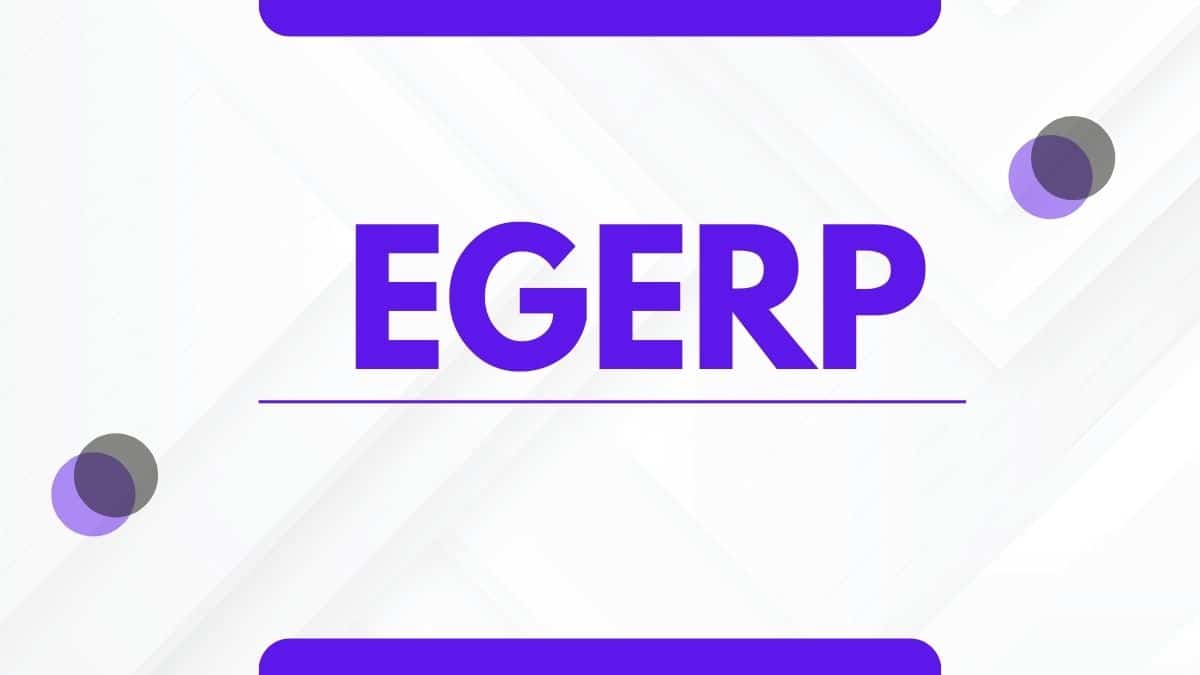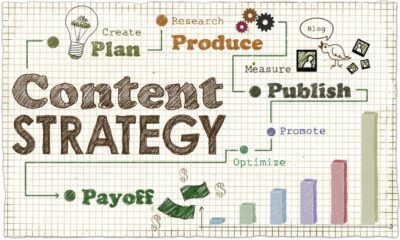

Business
Virtual Connections: Your Guide to Business Collaboration Tools
Over 75% of employers believe that teamwork and collaboration are significant aspects of any business’s success?
Have you noticed that the modern business workplace keeps changing? Even before the COVID-19 pandemic, many companies in different industries were looking to change their workplaces and create a more dynamic, inclusive, and comfortable environment for their employees.
Companies are now working towards the same goals- succeeding and retaining their employees. But is collaboration the ultimate secret to success? The answer is yes.
With the right business collaboration tools, you can easily foster teamwork and make your employees’ work easy. In this piece, we will guide you to choose the best business collaboration tools for your company. Read on below for more information:
Identify Departments and Areas That Need the Tools
Business collaboration tools can efficiently benefit your company. And the first step to choosing the right tool is to identify the user and business needs to determine the best tools. Whether you’re running a larger enterprise or a start-up company, you probably have numerous pain points with varying levels of priority.
You should identify these pain points and use them as a guiding tool. Take some time to research, talk to your employees, and consult your customers. When communicating with these groups, ensure you ask them open-ended questions that allow them to answer and provide you with important information about their wishes and opinions.
What do they think about your business? How can you improve service offerings? What can you do to make your employees’ lives easier and more comfortable?
Asking such questions helps you better understand your company’s pain points and areas that require improvement. After collecting the data, start by organizing these needs based on priority.
For example, suppose your customers have constantly complained that they aren’t getting the right products or services. On the other hand, your customer service team keeps complaining that the customers are not sending their feedback on time. In that case, you could be dealing with a communication issue.
This is often a common issue for companies whose main communication channel is email. If this is a significant issue for your company, you can look for a collaboration tool that allows instant communication between clients and your customer service team.
Not only will this solve the problem and increase your customer satisfaction rate, but it also ensures that employees can do their job efficiently without any delays. Whatever problems your business is facing, you should always look for the right tools to solve the problem.
Involve Users in the Choosing Process
Never start by picking random tools that you feel might work for your company. This isn’t the time for guessing games. Consider getting users involved in the business collaboration tools choosing process.
The idea is to ask the users their opinions, sit down and compare different tools. This helps you get the perfect tool for the business while sealing up any loopholes for complaints that might arise later. Involving users in the selection process also enables you to prepare the field for the tool’s deployment.
You can be sure of a faster onboarding process with minimal problems and incidents by doing this. You will also be assured of less room for costly software rejection. The best way to get users involved is by using a survey.
Consider preparing standardized questionnaires and share them with the users to get feedback on different tools you’re considering. But keep in mind that most times, people are biased and can choose tools based on familiarity. Therefore, it’s essential to provide your employees and customers with background knowledge about different tools on your list.
This knowledge helps them understand what a tool is capable of, its features, and how it compares with other tools in the market. This allows your employees to choose the right tool that’s more likely to help them, making it an effective process.
Do Your Homework
Researching more about different business development software tools in the market is key. You can even hire a third-party company to help you conduct interviews and systematic surveys with users and check the available software tools. At the end of the process, you will have information about what the users want and how different tools can help your business.
When you’re about to make a decision on the right business collaboration tool, ensure it has the following qualities:
- Key security features
- Clear pricing without any additional hidden costs
- Come with a mobile application that allows your users to collaborate on the go
- Requires minimal training during the onboarding process
- It’s the most cost-effective option
- The software is intuitive and has a simple user interface
- It comes with good quality customer support
- Offers a free trial for your business to test out the tool
Choosing the right business communication tool for your company isn’t a walk in the park. You need to ensure that the software has all the above qualities and more based on your needs and preferences. In most cases, the above criteria are easy to find on many business collaboration tools in the market today.
However, ensure you only choose the right tool for your business and employees. Check with them and find out which tool most users prefer and why they chose it, then give it to them.
Check the Business Collaboration Tool’s Software Compatibility
At this point in your journey, you probably already have a list of software tools that you’ve shortlisted. The shortlisted tools probably meet your business needs and have been accepted by the users. But before settling on the final pick, there is one last thing to consider; its compatibility with your existing software.
Check whether deploying the business collaboration tool with your current software establishment is possible. The last thing you need is to pay for a tool that isn’t compatible with your business software.
Will the tool you chose easily integrate and work with other existing systems and software in your company? How does it fit in? Do you need to manually transfer all the data from your existing systems to the new tool, or is it easy to integrate?
No matter how cheap the tool is, don’t pay for something that makes your employees’ work harder. Ensure it easily integrates with your systems to make everything seamless. Even if you will have to pay a little extra, it’s best to settle for software that has all the features your business needs and offers you great functionality.
If you’re looking for a great way to increase your business networking, consider working with Collaborate to help you increase your customer base. Collaborate offers businesses a connection to a vast network of other companies in the same industry. This way, your business can easily compete with major brands in the market at the local level.
Measure the Tool’s Impact
Any new business networking solution has an expected impact on the company. Whether the software’s desired result is directly related to how employees communicate or increased productivity, it’s essential to keep track of its impact.
The primary objective is to settle for a tool that makes your work easier, not the other way around. Below are steps to help you measure the expected changes brought by your business collaboration tool:
- Involve the evaluation stakeholders and find out if they are in alignment with the intended outcome and impact
- Assess the initial design and pinpoint gaps in the program design
- Conduct a more focused evaluation to avoid collecting more information than you need
- Confirm that the resources you provided met expectations
- Determine the proper data collection methods
- Plan the right approach to communicate your findings
Once you implement the business tool, it’s time to check how it impacts your business. Has the tool made it easier for your employees to carry out specific tasks? How has it improved the overall productivity of your business?
But you need to involve your users from the first step to the final one. If users are engaged in the evaluation of the tool, then you will have an easier time, and the decision will be simpler. After considering all the above tips, it should be easier for you and our team to find the right business collaboration tool based on your needs and preferences.
Find the Right Business Collaboration Tools Today
Whether you have remote working conditions or your employees are working from the office, it’s essential to find the right business collaboration tools to help them make work easier. Business collaboration is now a significant aspect of running any successful venture. The collaboration tools you choose can make or break your employees’ productivity resulting in losses.
Canvassing the market for the best business collaboration tools isn’t an easy process. You need to identify your business needs and areas that could greatly benefit from the collaboration. Then, involve your employees in the choosing process and check out different tools’ software compatibility.
Did you enjoy this article? Check out other posts on this site for more informative tips.
Business
The Perfect Domain: What to Consider When Choosing Yours

The domain name may seem insignificant to business owners new to the online game. After all, it’s just a sequence of characters that contains your business name, right? How important could it be? The customers will figure it out in the end…
Well, you may be surprised to learn that it actually plays an integral role in your marketing strategy. For many customers, your web address is the first impression it has with your business, and therefore it must be easily-memorable and searchable.
Otherwise, they may give up on visiting your website before they’ve even really considered your awesome product offering!
With this in mind, here are some important considerations when choosing your web address:
- It should be simple
When it comes to domain name registration, nothing is more off-putting to a customer than a convoluted web address. They should be able to hear your web address from a friend or see it on a flyer before immediately searching it on their smartphone or, at the minimum, be able to remember it upon returning home.
Let’s say you run a technology repairs store called “Easy Technology Repairs”. Sure, you could include all of this in your web address and make it read something like “www.easytechnologyrepairs.com.au”. But it’s simply far too long and the customer will likely have a hard time remembering all that when it comes time to choose your service to fix their television.
Instead, you could choose something as simple as “www.easytech.com.au” and the customers will have little trouble remembering it when they jump on the train or get home to their laptops. A simple and easily-memorable web address makes it much easier for the customer to remember and this will help drive conversions.
- It should typically only contain letters
With the exception being if your actual business name actually has numbers in it. Let’s say you run a travelling tailor and dry cleaning company called “Tailors To You”. Sure, the web address “www.tailors2you.com.au” may look sleek, but it can also confuse the customer who has already seen your name spelled “Tailors To You”.
Therefore, when they go to type the web address “www.tailorstoyou.com.au” and find that it doesn’t come up with your website they will be immediately deterred and look for your product through a competitor. Therefore, you should only include numbers (and special characters for that matter) if they are actually included in your business name!
- It should pertain to your business
There is nothing wrong with including a special keyword in your web address if it actually pertains to your business. For example, you run a pool building company called “Sweet Summer” but don’t actually have the word “pools” in the business title.
One of the best things you can do here is include the keyword “pools” in your web address to make a web address like “www.sweetsummerpools.com” to ensure that both your clients and search engines like Google know what kind of content can be found on your website.
This will not only make it easier for prospects to remember your web address, but it also works well for Google, who absolutely loves knowing what kind of content can be found through a business’s web address. The search engine will have little trouble categorising your website and will therefore be likely to rank it higher in the search engine results pages!
Business
Top Tips for Enhancing Human Resources in Your Business

Human resources are the backbone of any successful business. Your employees drive growth, innovation, and productivity for your company. Investing in robust human resource practices is essential for attracting top talent, motivating your team, and developing the skills of your people over time. Now more than ever, employers need to go above and beyond to recruit, retain, and get the most out of their staff. Here are some top tips for enhancing human resources in your business.
Invest in Ongoing Training and Development
One of the best ways to get more out of your human resources is to continually develop their skills. Look for opportunities for on-the-job training, mentorship programs, and external courses or certifications that align with your business goals. Support your team by providing time and financial assistance to help them upgrade their capabilities. The more you invest in training today, the more agile and effective your workforce will be in the future. It’s especially important to train managers and team leaders on leadership, communication, performance management, and team-building skills.
Pursue a Masters in Public Administration Online
One powerful way to boost your human resources leadership is by pursuing a Masters in Public Administration (MPA) online. MPAs focus on topics like organizational behavior, labor relations, stakeholder collaboration, and evidence-based human resource management. An MPA helps you drive HR strategy, resolve complex workplace issues, and contribute at the executive level. Look for an accredited MPA program that works for your schedule. Quality masters in public administration online options offer evening/weekend courses, accelerated formats, and 100% remote learning. Invest a year or two earning this degree, and your HR expertise will grow exponentially.
Offer Competitive Compensation and Benefits
Today’s top talent knows their worth and will shop around. Make sure you offer competitive pay, bonuses, healthcare, retirement planning, and other benefits tailored to your industry and region. Go above the required minimums when you can, as generous comp and benefits are highly attractive to job seekers. You want people to join and stick around at your company. Review your compensation structure regularly and get creative with benefits like flexible work arrangements, professional development funds, and expanded leave policies.
Create a Positive Company Culture
Don’t underestimate the importance of crafting a supportive, engaging, and fun workplace culture. Things like your mission and values, leadership style, team bonding opportunities, and physical workspace design all influence the everyday employee experience. When people feel motivated and connected to their team and company, they will sustain higher job satisfaction and productivity over time.
Leverage Work Analytics
Business intelligence is key for data-driven HR strategy and decision-making. Track key metrics like employee retention, absences, productivity, satisfaction scores, promotion rates, and other KPIs. Identify trends and correlations that give you insights, such as which managers have the happiest teams or what factors drive turnover in your company. Workforce analytics enables you to pinpoint bright spots and pain points and then address them.
Getting the most from your human capital requires forethought and investment. Use these tips to enhance HR capabilities. By taking a strategic approach and dedicating resources to your workforce, your organization will be well-positioned for future growth and success.
Business
Egerp Panipat: Tailored Software Solutions for Your Business Needs

Egerp Panipat is a beacon of modern innovation in the busy city of Panipat (India), amidst its historic significance. This esteemed company has created a niche in the technology world by providing tailored solutions that meet the needs of business.
Egerp Panipat, founded on the principles customization and innovation stands as a testimony to the power of custom software development for enhancing business efficiency and driving growth.
Understanding Egerp Panipat
Egerp Panipat doesn’t operate like your typical software company. It is a dynamic company that thrives in understanding the complexities of different businesses and creating solutions that perfectly align with their objectives. Its operations are driven by a commitment towards delivering excellence via innovation.
Tailored Solutions
Egerp Panipat’s focus on tailor-made solutions sets it apart from its competition. Egerp Panipat offers a customized approach to ERP software, unlike other packages that are available off the shelf. Every business has its own unique challenges and needs. It specializes in developing and designing solutions tailored to meet these needs.
Seamless Integration
Integration with existing processes is one of the biggest challenges that businesses face when they implement new software solutions. Egerp Panipat takes on this challenge by ensuring that its custom solutions are seamlessly integrated with the clients’ existing workflows. Egerp’s team ensures that any software application or ERP system is seamlessly integrated with the client’s current workflow.
Comprehensive Services
Egerp is known for its ERP expertise, but its services go far beyond this. The company offers a wide range of services that cater to different aspects of digital marketing and technology. Egerp Panipat offers a wide range of digital services including graphic design, SEO and mobile app development.
Egerp Panipat: The Egerp Advantage
Egerp panipat is a leader in innovation and reliability on a market that’s flooded with generic solutions. We will explore the benefits that companies can get by selecting Egerp as their technology partner.
Customization Excellence
Egerp Panipat is a company that lives by the principle of customization. The company takes pride in its ability to customize solutions that are perfectly aligned with client objectives and workflows. Egerp Panipat’s solutions are intuitive and user-friendly because it understands the uniqueness of each business.
Enhance Efficiency
Egerp’s custom software solutions can help businesses streamline operations and improve efficiency. Egerp’s Panipat solutions can be used to improve efficiency across the board, whether it is automating repetitive tasks and optimizing workflows. Businesses can concentrate their resources on growth and strategic initiatives when they have streamlined processes.
Scalability and flexibility
Scalability and flexibility have become essential in today’s fast paced business environment. Egerp understands the need for scalability and flexibility, so it ensures its solutions can grow with the business. Egerp’s Panipat solutions are scalable and can be adapted to the needs of any size business.
Comprehensive Support
Egerp Panipat believes that comprehensive support is essential throughout the lifecycle of a solution. Egerp’s team is dedicated to helping you get the most out of your technology investment. Businesses can be assured of receiving help by calling dedicated support channels.

Diversified offerings: Beyond ERP
Egerp Panipat offers a wide range of services. Take a look at Egerp Panipat’s diverse services:
Mobile App Development
Businesses need to be mobile-centric in today’s world. Egerp Panipat provides end-to-end services for mobile app development, enabling businesses to conceptualize, design and deploy customized mobile applications that meet their requirements. Egerp has the experience to make your app idea a reality, whether it is for iOS, Android or cross-platform.
Graphic Design
Visual appeal is crucial in the digital age to capture the attention of your target audience. Egerp Panipat’s talented team of graphic designers are experts at creating visuals that reflect your brand’s identity. Egerp panipat creates captivating designs for logos, branding materials, website graphics and marketing collaterals.
SEO Services
Standing out in an online world that is becoming increasingly crowded can be difficult. Egerp Panipat’s SEO services help companies improve their online presence and increase organic traffic. Egerp panipat’s data-driven strategy and proven methods help businesses reach their target audience and climb search engine rankings.
FAQs:
1. What sets Egerp Panipat apart from other software firms?
- Egerp Panipat is a specialist in tailor-made solutions, which are tailored to the needs of every business. Egerp’s Panipat solutions integrate seamlessly with existing processes, and are tailored to address specific challenges.
2. Egerp Panipat is a provider of services to a variety of industries.
- Egerp panipat serves a variety of industries including manufacturing, retailing, healthcare, education and others. Customized solutions are available to meet the needs of companies in various industries.
3. Can Egerp’s Panipat solutions scale up as our business grows?
- Egerp’s Panipat solutions are flexible and scalable, which allows businesses to adapt and grow with ease. Egerp’s Panipat solutions are scalable and flexible, allowing businesses to grow over time.
4. What type of support can Egerp panipat offer?
- Egerp provides support for its solutions throughout their entire lifecycle. The company’s support team will ensure that your technology investment receives the best possible care, from initial consultation to implementation and maintenance.
5. Egerp Panipat offers services other than ERP solutions.
- Egerp Panipat also offers other services, such as graphic design and SEO. Egerp Panipat can help you with a customized mobile app, eye-catching graphic design, or increased online visibility.
6. How does Egerp panipat protect data privacy and security?
- Egerp Panipat is committed to protecting the privacy and security of its clients’ data. We use industry standard security measures. Data protection and best practices are followed by the company to guarantee confidentiality and integrity.
7. Can Egerp Panipat solutions be integrated with existing software?
- Egerp Panipat solutions can be seamlessly integrated with existing systems and software. Egerp Panipat’s solutions can be customized to work seamlessly with legacy software or modern platforms.
8. What is the pricing structure of Egerp panipat?
- Egerp Panipat offers flexible price models that are tailored to the budget and needs of each client. The pricing may differ depending on the complexity of the solution and the ongoing support needs. The company offers transparent pricing and works closely to ensure cost effectiveness.
9. Does Egerp’s Panipat software have a simple and intuitive interface?
- Egerp Panipat does prioritize usability and the user experience when designing its software solutions. A team of designers and developers ensures that solutions are intuitive and easy to use, minimizing the learning curve.
10. How do I start using Egerp Panipat?
- Egerp Panipat makes it easy to get started. Contact the company via their website or the contact details provided. A member of their staff will be happy discuss your needs, offer a consultation and guide you through the following steps.
To conclude:
Egerp panipat is a shining example of innovation and reliability when it comes to technology solutions. Egerp panipat’s emphasis on customization and seamless integration along with its comprehensive support is a great way to meet the needs of companies across all industries. Read:How to Choose an IPTV for Yourself?
Egerp is your partner in all things digital, whether it’s ERP, mobile app development or graphic design. Egerp panipat is your partner for digital transformation.

 Business3 years ago
Business3 years agoFind out how useful a loan is without a credit check

 Business2 years ago
Business2 years agoBest Workplace Upgrade

 Digital Marketing3 years ago
Digital Marketing3 years agoIs YouTube Marketing Capable of Taking Your Business to the Next Level?

 Food3 years ago
Food3 years ago5 Best and Worst Foods for Boosting Metabolism

 Business3 years ago
Business3 years agoContent Creation Tips Every Digital Manager Needs to Know

 Travel3 years ago
Travel3 years agoA Quick Traveler’s Guide to Malaga – You Can’t-Miss

 Lifestyle3 years ago
Lifestyle3 years agoHow to Choose the Best Air Fryer for Me

 Fashion3 years ago
Fashion3 years ago8 Top Leather Jacket Picks To Try Out This Year















